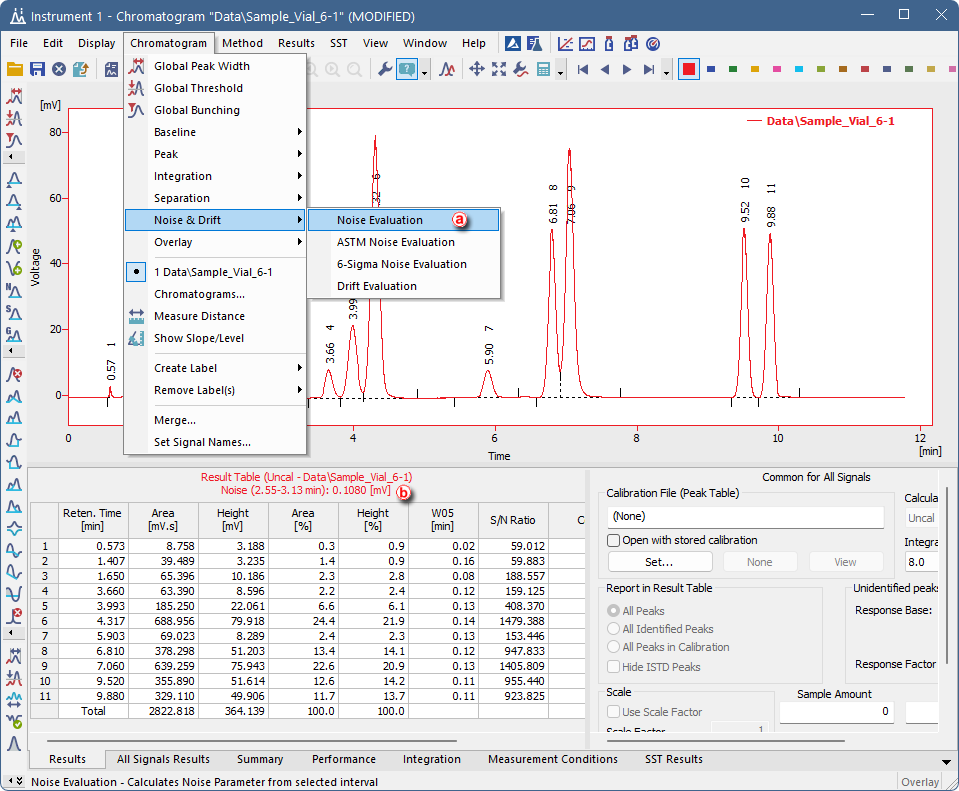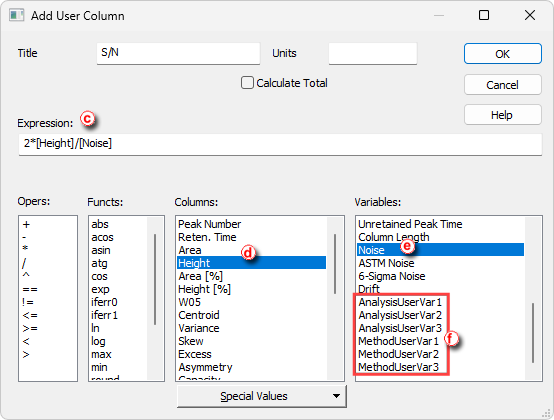This article describes how to calculate Signal to Noise Ratio using User Columns calculations with Variables.
Noise Parameter Evaluation
At first Noise value has to be evaluated. This value is subsequently used to calculate the Signal to Noise Ratio.
- Open measured chromatogram in the Chromatogram window
- Use Chromatogram - Noise & Drift - Noise Evaluation ⓐ and select the interval for noise calculation. The same result can be obtained from the Integration Table after selecting the Evaluation - Noise operation and inputting the desired interval manually.
- The value of the evaluated Noise Parameter is shown in the Result Table header ⓑ.
- For the same chromatogram such value is stored as a Noise variable in the Edit User Columns - Variables ⓔ.

Calculating Signal to Noise Ratio
Signal to Noise Ratio is important parameter used for method validation. Most commonly used generic formula for Signal to Noise = 2*Peak Height/Noise.
- For such calculation, two possible approaches exist:
- The Noise is determined from the same chromatogram within area with no peaks. The Noise variable ⓔ can be used directly in the formula entered in the Expression ⓒ edit box. In that case the resulting formula will be for example 2*[Height]/[Noise], where both parameters are determined from the same chromatogram.
- The Noise is determined from other chromatograms (e.g., by measuring blanks and evaluating the Noise in the area of expected peak). In the Edit User Column dialog in the Expression ⓒ edit box use the [Height] ⓓ from the Columns section for peak height and enter the calculated Noise value as a constant. The resulting formula will be then e.g. 2*[Height]/0.1080, where the number 0.1080 is the calculated Noise parameter. Alternatively, the calculated Noise parameter could be stored as a Method User Variable or as an Analysis User Variable ⓕ to simplify changes of the value - this variable can be then used instead of entering the numerical value in the Expression edit box.

Note:
In the Expression edit box, variables are treated as numbers, therefore operators and numbers can be used to modify the formula. The resulting formula can be e. g. 2*[Height]/[Noise] or 2*[Height]/[UserVariableNoise] (where the [UserVariableNoise] represents user variable to which the Noise value determined from chromatogram blank is stored) or 2*[Height]/0.1080 (where the 0.1080 represents the actual Noise value determined from chromatogram blank).
Note:
Setting the Analysis User Variable or the Method User Variable is described in the section User Variables.